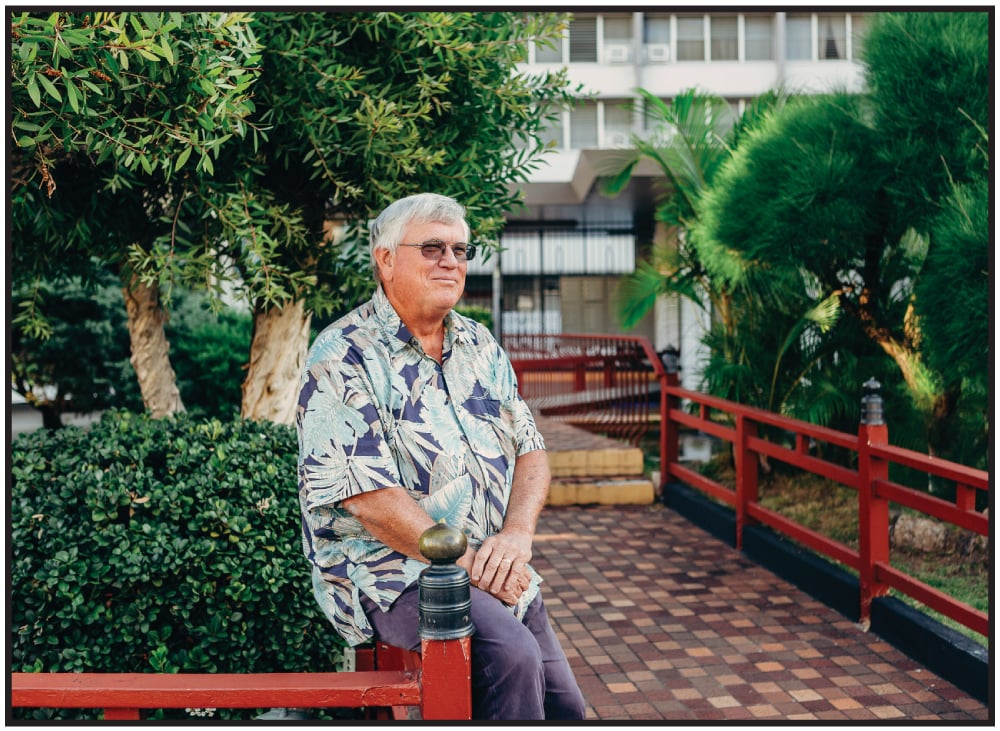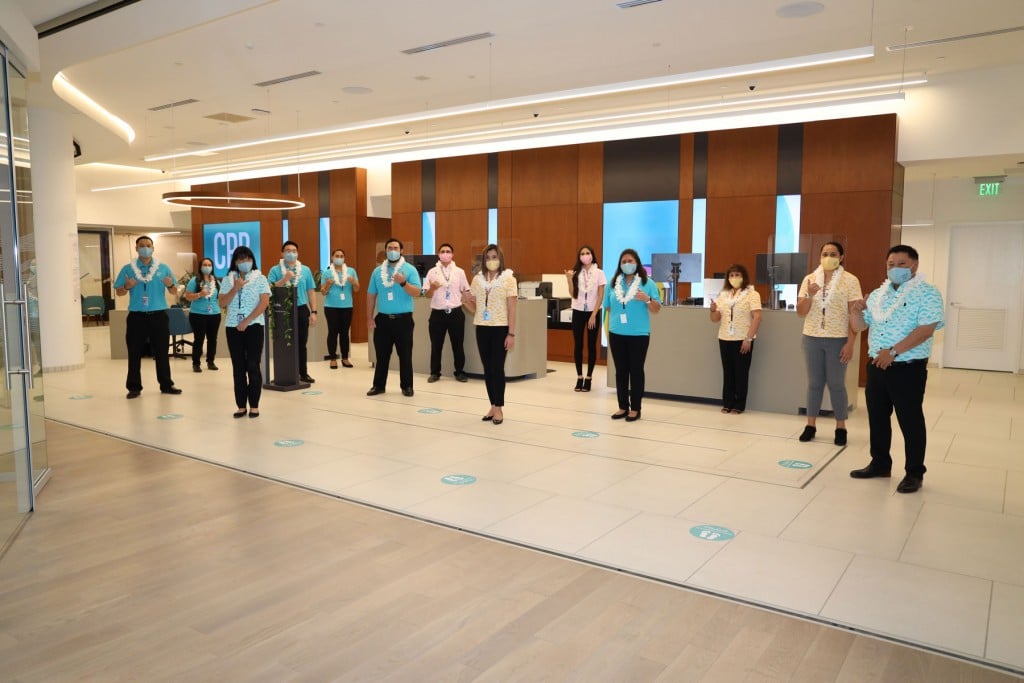You’re Paying More for Everything

Developer Peter Savio says everyone in Hawaii pays more for common items like food because of an unfair system of leasehold land rents. He says the current system does not account for decades of up-and-down land prices and economic conditions, but landowners and appraisers dispute his assessment.
Peter Savio thinks you’re paying too much rent if you’re a leasehold tenant. The reason, he says, is the way appraisers determine your rent when it comes up for renegotiation. If he’s right, the financial effect is enormous.

“Land-lease rent negotiations today are unfair, wrong, and favor the lessor at the expense of the lessee.” Peter Savio, Landowner and Affordable-Housing Developer. Photo by Aaron K. Yoshino
The well-known landowner and affordable-housing developer sent a screed to local media this year, in which he wrote:
“Land-lease rent renegotiations today are unfair, wrong and favor the lessor at the expense of the lessee. These unfair renegotiations have stolen tens of millions of dollars from lessees in the form of excessive rent and hundreds of millions of dollars in lost value of their homes, apartments and businesses. The appraisers are wrong and common sense tells you that the system is wrong.”
Moreover, Savio says, everyone in Hawaii suffers from the high rents of commercial properties.
“The cost of everything goes up when lease rents are so high. You’re not only stealing from the tenant, you’re stealing from the community. You’re raising the price of food; you’re raising the price of goods and services; you’re putting downward pressure on salaries because the company needs the money for rent.”
THE 8 PERCENT
To understand Savio’s complaint, you have to understand how leasehold works and how ground rents are calculated.
The premise of leasehold is the tenant takes a long-term lease on a property, but the lessor still owns the underlying land. In theory, the land is considered vacant, and the lessee owns the buildings and other improvements associated with his business or home. The charm of “buying” leasehold property is that it’s substantially cheaper than fee simple land. In place of a mortgage payment or regular rent, both of which reflect the cost of the underlying land, a leasehold tenant pays a much lower ground rent. But, because the lessee doesn’t own the land, when the lease is over, the property either reverts to the lessor, or the parties negotiate a new lease.
For this arrangement to work, the lease has to be long enough – usually 50 years – to justify the cost of developing the property. Banks, for example, often won’t offer a mortgage to build on a short-term lease. But the length of the lease means the lessor and lessee cannot predict what fair rents will be in the future. So the leases include a mechanism to calculate future rents. Typically, rent is fixed for 25 or 30 years, then the lessor and lessee renegotiate a “fair market” rent every 10 years after that. If they can’t agree on a new rent, it’s subject to binding arbitration. It’s this arbitration process that Savio is convinced is flawed.
Two factors help establish fair market rent. First, Savio says, is the fair market value of the land. Remember, this value assumes the land is vacant and unencumbered by a lease. The other number is the fair market rate of return, which Savio describes as “what a developer would pay to lease land at that point in time.” He believes this rate of return is the crux of the problem.
For more than two decades of rent renegotiation arbitrations, appraisers have used the same annual rate of return: 8 percent of the value of the land. This stability is simply irrational, Savio says.
“During that period we have had real estate market booms and busts. We have had interest rates go up and down. Market prices for real estate have gone up and down. Wages have changed. The price of food and the price of gas have changed. The rate of return needed by investors to invest in properties has changed. Everything has changed, yet the rate of return used to determine residential and commercial lease rents has remained at 8 percent. Common sense will tell you that something is wrong.”
He uses capitalization rates as a comparison. Nowadays, commercial real estate investors (including Savio) expect a return of only 3 to 5 percent on new investments when they buy fee simple land, he says. Unlike ground leases, these low cap rates include the returns from both the land and the building. Why would leasehold properties, which are supposed to be viewed as vacant land, produce higher returns?
To Savio, this unwavering 8 percent rate of return looks like a sign of price fixing or the action of a monopoly or an oligopoly. In Hawaii, where so much land is owned by so few, that charge resonates. Similarly, the appearance of self-dealing also hangs over the appraisers, many of whom, Savio says, are also lessors and therefore have a stake in maintaining higher rents on land leases. “How can appraisers arbitrate knowing that one of the appraisers is a lessor? To me, it’s jaded – especially if he’s the lessee’s representative. All of these arbitrations should be invalidated.”
Arbitration is a lucrative part of the appraisal business. Typically, when the property’s lease is being renegotiated, the lessee and the lessor each hire their own appraiser. For large, commercial properties, each party may also hire other consultants, like economists or soil scientists.
If the two parties cannot agree upon the new rent, the lease goes to arbitration, and both the lessee and lessor have to hire new appraisers to serve as their arbitrators. Those two appraisers then agree on a third, neutral appraiser to complete the three-person arbitration panel. At a minimum, that means there are now five appraisers involved in the rent renegotiation.
THE TENANTS
This isn’t the first time the arbitration process has been under fire. A few years ago, a group of lessees in Halawa, Mapunapuna and Hilo, facing what they felt were unfair rent increases, created a group called Citizens for Fair Valuation. In 2014, they persuaded the state Legislature to pass a law intended to make the arbitration process more transparent. Before, when a rent renegotiation went to arbitration, the arbitration panel simply stated the new rent. There was no explanation of how the arbitrators reached that valuation. The 2014 law requires they file a report that justifies their findings. Subsequent legislation ensures these reports are filed with the Bureau of Land Conveyances so they’re on the public record, although some appraisers say they have a hard time finding them.
Michael Steiner, the former executive director of CFFV, says the intent of the law was to make the appraisers on the arbitration panel follow the norms of the appraisal process. The lessees believed the lack of transparency drove up rents.
Another problem with the process, Steiner says, is the market rate for the land is often calculated based on its “highest and best use.” For example, if the tenant is a furniture store, but the highest and best use is a self-storage facility, the furniture store owner may end up paying higher rates, even if it’s unreasonable to expect that owner to change businesses.
Steiner believes the proliferation of out-of-state landowners added to the tension between lessees and lessors.
“If you go back into the history of ground-rent leases,” he says, “they used to be much more fair and reasonable. The big, local lessors, like Kamehameha Schools, Campbell Estate and Damon Estate, while not without conflict, were nevertheless deeply engaged with their tenants.”
“There should be a relationship between the tenants and the landlords,” he adds. “Noblesse oblige.”
It’s worth noting that, despite CFFV’s success with the 2014 legislation, the members’ rent renegotiations weren’t really affected. The 8 percent rule still applied, and the group disbanded.
“We closed it down when we got killed in all those resets,” Steiner says.
THE APPRAISERS
Richard Stellmacher, a prominent local appraiser, says Steiner and Savio both misunderstand the differing roles of an arbitrator and an appraiser. For example, he says, Steiner and the CFFV seem to think an appraiser would reach a different conclusion than an arbitrator – even though they’re the same person simply wearing different hats.
“They changed the rule and required that arbitrators provide this record of award, and the reason they did that is they thought, ‘If they have to provide a record of award, and they have to comply with USPAP, which are the Uniform Standards of Professional Appraisal Practices, the results are going to be different. I’m here to tell you, the results are identical. Whether you go through the long, drawn-out process and produce the record of award, or you just produce the award, the result is going to be the same.”
But, Stellmacher notes, an arbitration is different from an appraisal.
“The whole reason for arbitration is it’s a method of alternative dispute resolution,” he says. “You want the process to be efficient; the whole idea is to avoid litigation and save money.” The problem with the 2014 law, he says, is it adds to the cost of arbitration without really changing outcomes. On this point, Stellmacher and Steiner agree. Steiner points out the arbitration process, with its retinue of appraisers, consultants and other experts, can become expensive. “These proceedings can range from $75,000 to $100,000 to $250,000,” he says. Stellmacher’s point is that part of this cost is driven by the requirement to write a formal record of award. He believes the report should be optional.
Stellmacher thinks Savio makes a similar mistake. He says that, even though arbitrators are required by law to be appraisers, an arbitrator’s duty is different from an appraiser’s. “An appraisal is an estimate of value,” he says. “You come to me and say, ‘How much do you think the land under is worth?’ and I say, ‘It’s worth a million bucks. That’s my estimate, and I’ll give you comps to show you how I did it.’ But when you go to arbitration, the arbitrators don’t estimate value. They may use some of the same techniques and theories to get to their number, but the result of an arbitration is not an estimate of value. It’s a determination of value. And a determination isn’t an estimate; it’s a fact.”
This point is made clear by the obvious point that once a lease has been arbitrated, the lessee has no choice but to pay the prescribed rent. As a contractual matter, an arbitrator’s determination is a fact.
Needless to say, Stellmacher and Savio don’t agree on the importance of this distinction. But Stellmacher does concede one point to Savio: There are rational reasons, he says, to think the rate of return could be something other than 8 percent. But he’s steadfast in saying that the rate must be set by appropriate precedent, and that all relevant precedents point to 8 percent. In fact, Stellmacher is working on a rent renegotiation for one of Savio’s properties, and Savio is trying to convince him that the rate should be less than 8 percent. By way of precedent, Savio has offered several examples of rent renegotiations that apparently settled on a lower rate. But Stellmacher insists none of these comparisons are valid, either because the agreement didn’t constitute an arm’s-length transaction, no agreement was reached or the valuation was based upon something other than an appraised value of the land. Absent a suitable precedent, the circular logic of the 8 percent rate of return will persist.
However, a few decades ago, the precedent was 6 percent and it changed to 8 percent, so new precedents are not unprecedented.
THE LANDOWNERS
Large landowners who dominate the leasehold market also think differently than Savio. Marcy Flemming, acquisition and leasing manager at Kamehameha Schools, says it’s wrong to directly compare fair market rates of return on leasehold property with fee simple capitalization rates.
“Remember,” she says, “with ground rent, the rent is set and not reset for five to 10 years. In some rents, it’s not reset for 30 years. So, there’s a risk there that you’re not going to see in a cap rate.”
She adds there’s also market risk. If the rent renegotiation happens when land prices are stagnant, she says, the lessor won’t capture the true value of the land when prices rise (as they eventually always do). “We’ve had that happen in some areas, where we renegotiated at the beginning of the cycle, and then the rents stayed the same for 10 years even though the land value rose. If we had renegotiated a year or two later, we would have been in much better shape.” She notes that no one has ever volunteered to pay more when their rents were too low.
Moreover, the rate of return isn’t usually the point of contention in a rent renegotiation, Flemming says.
“Most of the leases that we’re dealing with now already have a stated rate of return written into them. It depends on when the lease was struck. If the lease is old, it was generally set at 6 percent. But that number came up, over the 1980s and 1990s, to 8 percent, which is generally the current rate of return we see in the market. And our target rate on new leases is 8 percent.”
She gives the example of the Target store in Salt Lake. KS bought the land under the store and consolidated it with neighboring land KS already owned and leased the whole parcel back to Target.
The rate of return? Eight percent.
This highlights another important point. Although the ground rent renegotiation issue is often portrayed in the media as an unfair conflict between small mom-and-pop businesses and giant landowners, like KS or the state, many times the lessee on the other side of the table is just as sophisticated as the lessor. For example, Flemming says, KS just went through an arbitration with Bank of Hawaii and its trust department. Similarly, she says, “We’re currently in a rent renegotiation with Peter (Savio), but market rate of return was not an issue.”
In fact, Flemming says, the real challenge during rent renegotiations isn’t establishing a rate of return, but setting the land value. “There are not a lot of transactions in the Hawaii market,” she says. “Ideally, to establish land value, you want to look at fee simple purchases and sales of like properties: similarly zoned, similarly sized, in a similar sub-market. There’s just not the volume of transactions in Hawaii to do that.”
In addition, the number of arbitrations is small. Flemming says KS, the largest private landowner in the state, had about 150 rent renegotiations in the past 10 years, and only five went to arbitration. “So, it doesn’t happen very often,” she says. “Although one of those arbitrations was in Halawa Valley, where we had multiple leases under one master lease.”
THE RECKONING
Savio is having none of it. In his opinion, the stable 8 percent rate of return cannot be justified over decades. And the cost is high. If the rate just went down to 6 percent, the minimum allowed in many leases, it would amount to a 25 percent decrease in rent for lessees. That could mean the difference between success and failure for many businesses.
He says it’s the lessor’s duty to say, “This is wrong.” He plans to do his part. After the arbitration that Stellmacher is part of puts an 8 percent rate of return on his property, he intends to reduce the rate to 6 percent.
“That’s the way leasehold should work. The lessee has the obligation to pay, but the lessor has the obligation to be fair.”
ON THE OTHER HAND
Today, developer Peter Savio argues that lessors are charging too much when they renegotiate rents with lessees. But, in the late 1980s, when much of Hawaii’s residential property was being converted from leasehold to fee simple, he was on the other side of the table. Back then, he argued that arbitrators were valuing the fee simple prices too low. That’s because they were incorrectly basing their valuations on the ground rents the land could generate. But the lessee wasn’t buying the fee on the property so he could lease it out; he was going to occupy it. Ground rent only reflected the use of the house or apartment, not the true price of the land.
“So how do you value that?” Savio asks.
Asked recently about the issue, Savio says he maintains the same position he held back in the 1970s: The real value of the land alone is the fee simple price minus the price of the fair market leasehold price.
“The difference,” Savio says, “should be what the land is worth. Because, when you combine the two pieces – the land and the apartment – it should total 100 percent of the value.”
This logic meant it was more expensive to convert from leasehold to fee, so the lessees naturally objected. In the end, though, Savio’s views prevailed. Today, the logic goes the other way.






